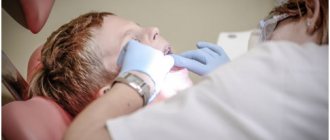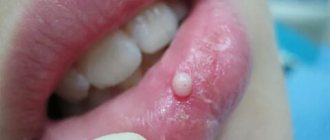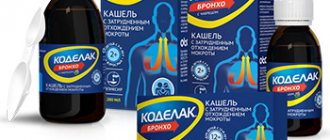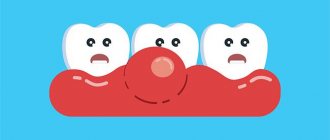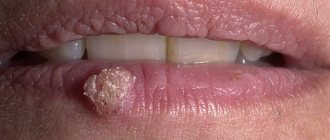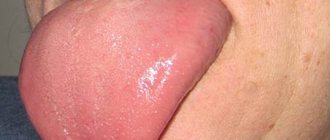A child's body is a developing system that, due to its immaturity, is especially susceptible to infections and viruses. Some diseases especially easily affect children's bodies. Such pathologies include reactive pancreatitis - spasm of the excretory ducts of the pancreas. Today, the concept of “reactive pancreatitis” is not used among gastroenterologists, but it can still be found in pediatric practice1.
Reactive pancreatitis cannot be called a separate disease. Rather, it is a reaction to viral influence, a malfunction of the gastrointestinal tract, or improperly organized nutrition1.
This form of inflammation of the pancreas in children most often develops as a chronic problem, but in cases of systematic malnutrition, an exacerbation of the disease is possible.
general information
From an anatomical point of view, human lips are musculocutaneous folds surrounding the oral cavity. They consist of the orbicularis muscle, skin and mucous membrane. The upper and lower lips are connected to each other by commissures (commissures) at the corners of the mouth.
Lips are constantly exposed to external and internal factors and act as a platform for the manifestation of various diseases. An indicator of pathological changes in the body is, in particular, a symptom that is simply called “white lips”.
Vinikli nutrition - consult a doctor
To make an appointment for a consultation, call or fill out the return form:
(050) 301-99-26 (067) 446-11-79
Damn,
Your request has been successfully sent!
A call center specialist will contact you as soon as possible to clarify all the details.
In normal condition, the lips stretch without pain, have a pink or light red color, and a smooth surface. White lips in a child or adult are a leading sign of various diseases, to which dryness, swelling, soreness, and cracking may be added.
Lips are an important detail that affects the aesthetic perception of the face and performs many other functions. The lips are involved in the formation of facial expressions; they contain receptors responsible for different types of sensitivity. In addition, they serve as an indicator of a person's health status.
When a pathological process occurs in the body, the lips can change their size, become less elastic, lose sensitivity, become covered in rashes, and turn white. Consulting a dermatologist will help eliminate these manifestations or prevent them.
How and when can you become infected?
Sources of rotavirus infection can be a sick child or an asymptomatic carrier. The virus is excreted from the body in the stool and gets onto household items, clothing and food with dirty hands.
Doctors often call rotavirus infection a “dirty hands” disease.
A healthy child can introduce the virus into the body first by touching things, and then by touching the face, and also by eating unwashed vegetables and fruits.
Rotavirus outbreaks typically occur in winter, early spring, or late fall because viruses persist in the environment longer at low temperatures. In summer, food poisoning occurs more often - the cause is usually bacterial contamination of food, and bacteria multiply better in the hot season.
Why are lips white
Human lips, their surface, mucous membrane, and surrounding skin very often display pathological changes that fall within the scope of consideration of several areas of medicine. As a rule, these are deviations that require dermatological, dental, therapeutic care, and the attention of infectious disease doctors.
Only a qualified specialist will be able to determine whether, in your case, white lips are an external sign of illness or a temporary cosmetic problem.
The main reasons why a person’s lips turn white are as follows.
- Manifestation of anemia. The lips and their mucous membranes lose their natural color and turn white due to a decrease in hemoglobin content in the blood. Such changes are observed mainly in iron deficiency or anemia caused by a lack of vitamin B12. The change in color is often accompanied by a deterioration in general health, headaches, burning and painful sensations in the lips, and their dryness.
- Oral candidiasis. More common in young children. It develops when infected with yeast-like fungi of the genus Candida. First, white dotted spots appear on the lips, later they merge and form a continuous film.
- Leukoplakia. A chronic disease accompanied by increased keratinization of the epithelium and inflammation of the mucous membrane. The color of the lesions on the lips can vary, including whitish or white-gray.
- Smoking. Under the influence of nicotine, foci of whitish hyperkeratosis may appear.
- The influence of meteorological conditions (dry air, wind, low temperatures). In such situations, a short-term change in color is observed, followed by restoration of normal tone when the provoking factor is eliminated.
If the natural color of the lips is not restored within several days, they are sore, there are rashes on the surface, or a deterioration in the general condition, you need to consult a doctor - a therapist or a dermatologist. He will study your complaints, conduct anamnestic information collection and a physical examination. If there is a suspicion of a systemic or infectious disease, he will refer a specialist of the appropriate profile for consultation.
Symptoms of reactive pancreatitis in children
The intensity of the symptoms of reactive pancreatitis largely depends on the age of the child. In children under three years of age, the signs of the disease are usually mild, while in older children they are more pronounced. The main symptom of reactive pancreatitis in children is pain1.
Pain in the reactive form of pancreatitis is concentrated in the navel area (when asked “where does it hurt,” children most often indicate this exact place). But it also happens that the child points to another part of the abdominal cavity. This is due to the immaturity of children's nervous regulation: the baby may feel like it hurts in different parts of the abdomen. That is why only a doctor can accurately link the presence of pain with the manifestation of reactive pancreatitis.
In older children, pain may radiate to the back, forcing young patients to adopt positions that relieve pain - sitting in a chair, leaning forward, or lying on the left side or stomach1.
In addition to pain, concomitant symptoms of reactive pancreatitis in children appear1:
- nausea and uncontrollable vomiting - first with food, and later with gastric juice;
- frequent loose stools (diarrhea may alternate with constipation);
- a slight increase in temperature to 37-38°C;
- lack of appetite, screaming and loud crying in infants and newborns;
- bloating;
- feeling of dry mouth.
White lips in adults and children: diagnosis and treatment
In cases where anamnesis and visual examination of the affected areas of the lips are not enough to make an accurate diagnosis, laboratory and instrumental studies are prescribed. Usually this:
- clinical blood and urine analysis;
- blood chemistry;
- microscopy of lip plaque, histological examination of the selected material;
- Ultrasound, CT, MRI - if necessary, assess the condition of internal organs.
After the diagnosis is made, measures are taken to eliminate the causes of the disease. For some, the doctor will recommend getting rid of bad habits, preventing the adverse effects of the environment, and reviewing their diet in order to saturate it with vitamins and microelements. Others will need drug therapy with systemic and local medications. The choice of medications is carried out taking into account the characteristics of pathological changes in the lips and the nature of the body diseases identified during diagnosis.
How to make an appointment with a pediatrician
If the situation has become urgent, then you can dial an ambulance from our clinic, whose phone number is +7 (495) 229-00-03. You can also contact us through our website using the feedback form.
Our medical center staff act as quickly as possible. Especially if we are talking about an emergency situation that requires urgent hospitalization. The clinic carries out diagnostics and immediately prescribes the optimal treatment method that will help your child overcome all the difficulties of the disease as quickly as possible.
Appetite and sleep
Parents often pay attention to the most obvious things: for example, appetite and sleep. Does poor appetite indicate anything? Of course, since this is a reflection of the general state of the baby’s nervous system, its balance and comfort.
If a child is, as they say, “skin and bones,” and has bruises under his eyes and often catches colds, you can suspect a tendency to tuberculosis, and in this case you need to see a TB doctor more often. The appetite must correspond to the energy expended by the body, and when the child is inactive and likes to play “quiet games,” it’s okay if he eats a little. If, on the other hand, he runs around all day and comes home “with his tongue hanging out,” you most likely will not have to persuade him to eat properly.
However, if a child eats a lot, regardless of his physical activity, and does not gain weight, this may also indicate a disease, for example, the presence of worms or some kind of psychological problems.
Parents are also worried about the child’s poor sleep. Most often, healthy children do not wake up at night, but may have difficulty falling asleep. Think about how often you neglect your child’s daily routine—whether he goes to bed at a strictly set time, doesn’t watch scary cartoons or action films at night, or spends the evening at the computer. All this excites the child’s nervous system and confuses his biorhythms.
Language
Doctors of the old school began the examination with a request to stick out the tongue as much as possible, even if the stomach or back hurt. The tongue is a mirror of the gastrointestinal tract; all our diseases are “written” on it no worse than on a prescription form.
If there is a constant yellow or white coating on the tongue, this indicates a problem with the functioning of the stomach or intestines. You should also be wary of the so-called “geographical” patterns on the tongue, which are often observed after long-term use of antibiotics or with intestinal dysbiosis, a lack of beneficial bacteria inhabiting it.
What are the dangers of rotavirus without treatment?
Diarrhea and vomiting cause the body to lose a lot of water along with sodium, potassium, magnesium and other electrolytes. This leads to disruption of the lungs - the child begins to breathe frequently and shallowly; the heart and blood vessels - the heart rate increases, blood pressure decreases; and the brain - dizziness, headache, and weakness appear.
In infants, rotavirus infection is most dangerous because convulsions or loss of consciousness can occur as a result of the loss of large amounts of fluid and electrolytes. It is very important to immediately call an ambulance at the first signs of an intestinal infection in infants.
What to do to avoid getting sick
Frequent and thorough hand washing with soap is the prevention of any viral and bacterial infections.
- You need to teach your child to do this from an early age: after going outside and going to the toilet, before meals, and just several times a day.
- Parents should wash their hands themselves before touching or feeding the baby.
- It is important to wash vegetables and fruits before eating, observe temperature conditions when preparing food, and drink boiled or bottled water.
The largest amount of virus is excreted in the stool in the first 5 days of illness, so during this period you need to wash your hands more often and wet clean your home.
How to help the body recover
“Previously, there was an opinion that if you have a rotavirus infection, you should not consume dairy products,” says Elena Kolganova. — Now scientists have revised their opinion on this matter: if a child is breastfed or formula-fed, then nothing needs to be changed. For adult children, it is advisable to remove fresh fruits and vegetables, as they enhance peristalsis and fermentation processes in the intestines.”
If a child has a temperature above 38.5 ºС, you can give him antipyretics, and in case of severe pain - antispasmodics. You should not give painkillers - this will mask the symptoms and it will be difficult for the doctor to make a diagnosis. You should not rinse your child’s stomach - this will increase vomiting and lead to extreme dehydration - loss of consciousness, convulsions.
“Treatment of uncomplicated rotavirus infection is symptomatic: the main thing is to drink plenty of fluids. Vomiting and loose stools usually go away on their own. However, taking probiotics can speed up the recovery process; their administration is safe and quite effective,” says Daria Zakharova.
It is always easier to prevent a disease than to treat it - observe the rules of personal hygiene and teach your children to do the same, wash fruits and vegetables and do not drink tap water.

